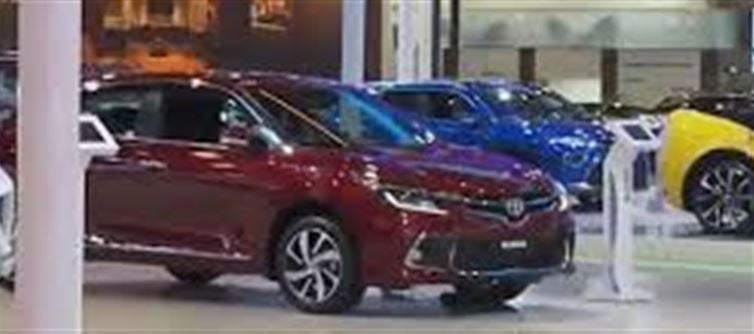
The festive season in India, especially during Navratri, is traditionally a time when people splurge on luxury goods, vehicles, and home appliances. This year, however, the surge in vehicle sales has been exceptional, with a record-breaking number of cars, bikes, and other vehicles flying off showrooms. This spike has been attributed to several factors, including the GST 2.0 reform that has reshaped the pricing structure in the automobile sector.
1. The Role of GST 2.0 in Vehicle Sales Surge
The introduction of GST 2.0, which offers more transparency and less bureaucratic delay, has made it easier for consumers and manufacturers alike. Under GST 2.0, the tax structure on automobiles has been streamlined, and in some cases, the effective GST rates have been lowered.
This new tax regime has led to a significant reduction in vehicle prices across the board. With taxation simplified, consumers have benefitted from lower costs on both small cars and luxury vehicles. The reforms have led to increased disposable income for buyers, thereby propelling higher consumer demand for vehicles.
2. Festive Season Push: Why navratri Is Driving Sales
Navratri, a time of worship, celebration, and new beginnings, is a significant shopping period in India. people tend to make big-ticket purchases during this time, believing it brings prosperity. Traditionally, the automobile sector sees a boost in sales during the festival, with incentives, discounts, and special offers drawing buyers in.
This year, the Navratri boom has been particularly notable. With consumers eagerly waiting for the best deals and the GST reform making vehicles more affordable, sales numbers have soared across urban and semi-urban markets.
3. Impact on Various Vehicle Segments
· Passenger Vehicles: The demand for both entry-level cars and premium sedans surged. Many automakers like Maruti Suzuki, Tata Motors, and Mahindra & Mahindra reported record bookings for their cars during this period.
· Two-wheelers: The two-wheeler market also witnessed a significant increase in sales, with Honda, Hero MotoCorp, and Bajaj leading the charge in demand.
· Electric vehicles (EVs): There has been a noticeable rise in the EV segment as well. Consumers are increasingly looking for eco-friendly options, and the government’s push towards EV infrastructure is further incentivizing this change.
4. The GST Effect: Lower Taxes, Lower Prices
One of the key driving forces behind this surge in sales is the GST 2.0 reform, which introduced a revised tax structure for vehicles, especially in the mid-range and premium segments. Here’s how it has impacted the market:
· Lower Tax Rates: Many vehicle models now fall under a lower GST slab, which means their on-road prices have decreased. This has incentivized buyers who were previously on the fence about making a purchase.
· Simplified Taxation: The GST reform has also eliminated the state-level taxes and additional levies, making the purchase process smoother and quicker. This ease of purchase has encouraged more people to finalize their decisions during the festive period.
5. What Does This Mean for the Future?
The Navratri boom has set the tone for the upcoming months. With the festive season now in full swing, automakers are optimistic about the continuation of this trend, especially with the new GST reforms making vehicles more accessible to a wider population.
· Extended Discounts: Many automobile manufacturers are expected to continue offering festive discounts and special financing schemes until the end of the year, further driving demand.
· Long-Term Impact: With GST 2.0 simplifying taxation, vehicle sales could see a sustained rise in the coming months, especially as the Indian economy continues to recover. Moreover, the growing trend of eco-friendly vehicles, including electric cars and hybrids, could play a significant role in shaping the industry’s future.
Conclusion: The festival of Prosperity for India’s auto Industry
Thanks to the GST 2.0 overhaul, coupled with the festive fervor of Navratri, the indian automobile sector is experiencing a record spike in vehicle sales. The simplified tax regime, combined with attractive offers, has allowed more consumers to invest in vehicles, pushing the auto industry to new heights.
As the year progresses and the festive season continues, the momentum is expected to build, potentially driving vehicle sales to unprecedented levels in India. For now, this “Navratri boom” is being celebrated by both automakers and consumers, marking a prosperous period for India’s ever-growing automobile market.
Disclaimer:
The views and opinions expressed in this article are those of the author and do not necessarily reflect the official policy or position of any agency, organization, employer, or company. All information provided is for general informational purposes only. While every effort has been made to ensure accuracy, we make no representations or warranties of any kind, express or implied, about the completeness, reliability, or suitability of the information contained herein. Readers are advised to verify facts and seek professional advice where necessary. Any reliance placed on such information is strictly at the reader’s own risk..jpg)




 click and follow Indiaherald WhatsApp channel
click and follow Indiaherald WhatsApp channel